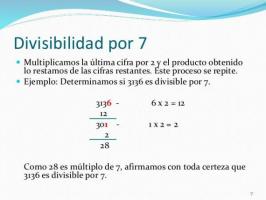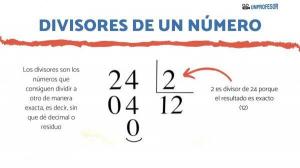Rule of multiples of 6
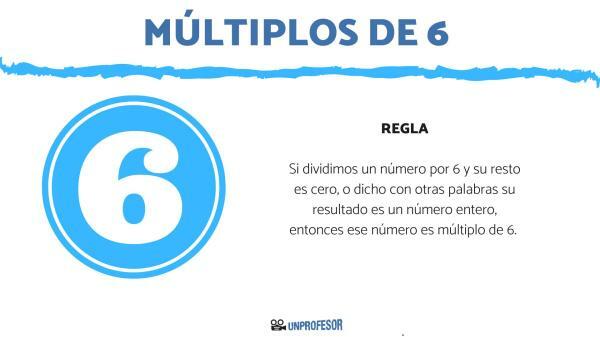
The rule for multiples of 6 is as follows: If we divide a number by 6 the result is 0, then it is because it is a multiple of 6.In this new lesson from a Teacher we will see the rule of multiples of 6. We will start by understanding what a multiple is, to then see the rule of multiples of 6 and ending with some examples. It is a lesson typical of the subject of mathematics and is studied during primary school. Here we leave you a simple lesson with solved exercises for you to practice at home. Let's start!
Index
- What are the multiples of a number?
- How to know when a number is a multiple of 6? Ruler
- Examples of multiples of 6
- Exercises with multiples of 6
- Solution to exercises with multiples of 6
What are the multiples of a number?
The multiples of a number They are all those possible results that occur from multiplying that same number by all the natural numbers. This means that the multiples of a number they are infinite, except of course, zero.
When a number is part of another a certain number of times we can say that it is a multiple of that number.
examples
- Is 12 a multiple of 6? Yes, because 12 is twice the number 6 since 6 x 2 = 12
- Is 36 a multiple of 6? Yes, because 36 is six times the number 6 since 6 x 6 = 36

How to know when a number is a multiple of 6? Ruler.
Here's the multiples of 6 rule! Multiples of 6 are multiples of 2 and 3 at the same time. That is, for a number to be a multiple of 6, it must be a multiple of 2 and 3.
The multiples of 2 are all numbers that end with an even number, while the multiples of 3 must contain 3 a certain number of times or if the digits that make up the number are divisible by 3.
Another way to know if a number is a multiple of another is through divisibility, that is, if a number is divisible by another, then it will be a multiple of this number.
Remember that a number is divisible by another if the result is an integer, or if its remainder is zero.
If we divide a number by 6 and its remainder is zero, or in other words its result is an integer, then that number is multiple of 6.
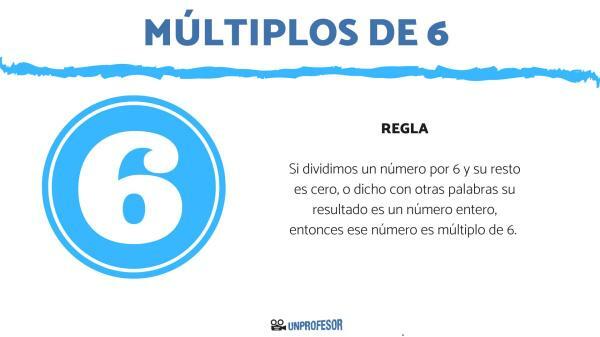
Examples of multiples of 6.
let's see some examples of multiples of 6 to finish understanding how to use the rule.
Is the number 216 a multiple of 6?
First we can see that the number ends in six, therefore it is an even number, then it is a multiple of 2 and we already have one point of our rule fulfilled. We add the figures 2 + 1 + 6 and we obtain 9, which is a multiple of 3, therefore we already have the second point of the rule fulfilled. So we can say that 216 is a multiple of 6.
Let's check by doing the division:
216 / 6 = 36
Is the number 108 a multiple of 6?
- is a multiple of 2 by ending with an even number
- is a multiple of 3 because 1 + 0 + 8 equals 9
So 108 is a multiple of 6. Let's check 108 / 6 = 18
Is the number 171 a multiple of 6?
The number 171 ends with an odd number, not with an even number, therefore the first rule of multiples of 6 is not fulfilled and therefore, we can say that 171 is NOT a multiple of 6.
Is the number 136 a multiple of 6?
is a multiple of 2 because it ends with an even number.
but it is NOT a multiple of 3 because the sum of its digits 1 + 3 + 6 is equal to 10, which is not a multiple of 3
Therefore, since the second rule is not fulfilled, then we can ensure that the number 136 is NOT a multiple of 6.
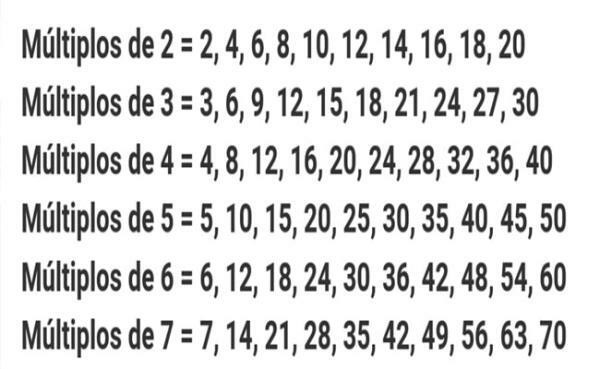
Exercises with multiples of 6.
we leave you some exercises so you can apply what we learned in a Teacher. Once finished, you will see the solutions below.
Are the following numbers multiples of 6?
- 156
- 143
- 366
- 444
- 82
- 492
- 271
- 138
Solution to exercises with multiples of 6.
We provide you with the results along with the explanation of each of the exercises raised above.
- 156 is a multiple of 6 because it ends with an even number and the sum of its digits 1 + 5 + 6 is equal to 12, which is a multiple of 3. And 156 / 6 = 26
- 143 is NOT a multiple of 6 because its last number is NOT even, so it does not satisfy the first rule.
- 366 is a multiple of 6 because it ends with an even number and the sum of its digits 3 + 6 + 6 is equal to 15, which is a multiple of 3. And 366 / 6 = 61
- 444 is a multiple of 6 because it ends with an even number and the sum of its digits 4 + 4 + 4 is equal to 12, which is a multiple of 3. And 444 / 6 = 74
- 82 is NOT a multiple of 6 because its last digit is even, but the sum of its digits 8 + 2 is equal to 10, which is not a multiple of 3, so it does not meet the second rule.
- 492 is a multiple of 6 because it ends with an even number and the sum of its digits 4 + 9 + 2 is equal to 15, which is a multiple of 3. And 492 / 6 = 82
- 271 is NOT a multiple of 6 because its last digit is NOT even, so it does not satisfy the first rule.
- 138 is a multiple of 6 because it ends with an even number and the sum of its digits 1 + 3 + 8 is equal to 12, which is a multiple of 3. And 138 / 6 = 23
If you liked this lesson from a Teacher, don't forget to share it with your classmates. Keep browsing the web, you can keep finding content you like.
If you want to read more articles similar to Rule of multiples of 6, we recommend that you enter our category of Arithmetic.

